You are here
Federal Deficit and Debt: April 2024
Every month the U.S. Treasury releases data on the federal budget, including the current deficit or surplus. The following contains budget data for April 2024, the seventh month of fiscal year (FY) 2024.
Current Federal Deficit
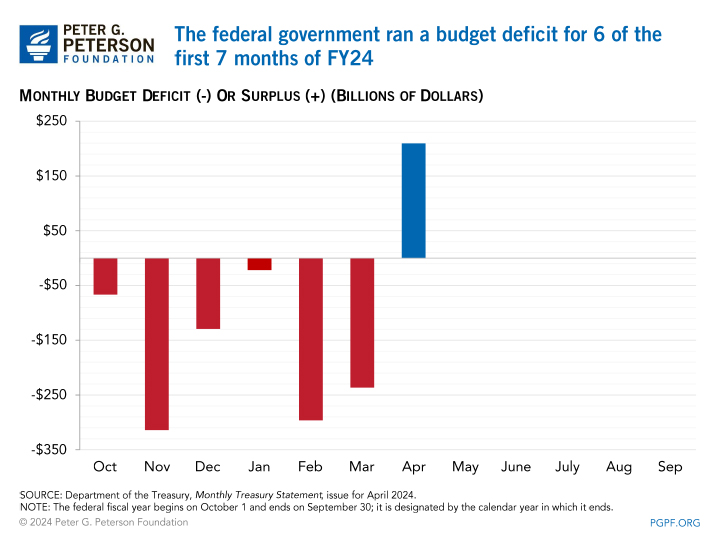
- Federal Budget Surplus for April 2024: $210 billion
- Federal Budget Surplus for April 2023: $176 billion
The federal government ran a surplus of $210 billion in April 2024 — $33 billion more than the surplus of $176 billion that was recorded in April 2023. It is important to note that certain payments were shifted into March 2023 because April 1, 2023 fell on a weekend. Adjusting for the effects of that timing shift, the April 2024 surplus was $107 billion more than the same month last year.
Spending in April 2024 was $567 billion, $104 billion more than in April last year, although much of that increase can be attributed to the timing shift. Adjusting for that timing effect, outlays were up $30 billion compared to April 2023. The primary driver was a $22 billion increase in spending on net interest, mostly due to higher interest rates. Spending by the Department of Education also increased — by $16 billion — because more costs associated with the origination of new loans were recorded this April than is typical. Those and other increases in spending were partially offset by a $24 billion decrease in outlays for the Small Business Administration, stemming from the cost of disaster loans recorded last April. Revenues in April 2024 were $138 billion above collections from a year ago, mainly due to increased collections of individual income and payroll taxes ($119 billion more than April 2023) and corporate income taxes ($11 billion).
Cumulative Federal Deficit
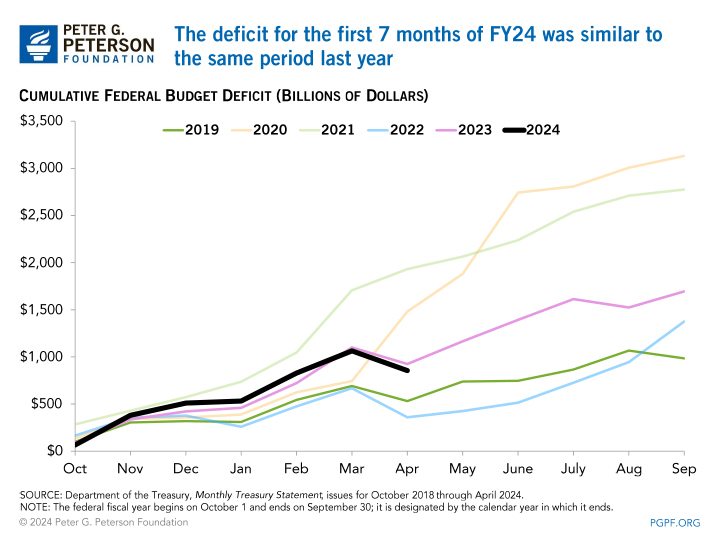
- Cumulative FY24 Deficit: $855 billion
- Cumulative FY23 Deficit (through April 2023): $925 billion
This year’s cumulative deficit is $69 billion below last year’s level. However, because October 1 fell on a weekend in both calendar years 2022 and 2023, certain federal payments were shifted into the previous fiscal year in both FY23 and FY24. Without those effects, and the timing shift in April 2023, the deficit for FY24 through the end of April would be $60 billion below last year’s corresponding total.
For the first seven months of FY24, total outlays were $3.8 trillion, $208 billion higher than the same period in the previous year. Adjusting for timing shifts, spending was $217 billion above the same period last year. Two areas of the budget have experienced rapid increases so far this year. Net interest has grown by $150 billion (41 percent) relative to the first seven months of last fiscal year, mostly due to higher interest rates; spending for Social Security benefits has risen by $67 billion (9 percent) because of cost-of-living adjustments and an increased number of beneficiaries. In addition, spending on Medicare, defense, and Veterans Affairs increased significantly in the first seven months of this fiscal year. Partially offsetting those increases was a $34 billion decrease in spending by the Pension Benefit Guaranty Corporation because certain one-time payments were made to pension plans in FY23 but not in FY24. Other categories of outlays that decreased were related to the government’s response to the COVID-19 pandemic ($29 billion), the Department of Education ($28 billion), and the Small Business Administration ($24 billion).
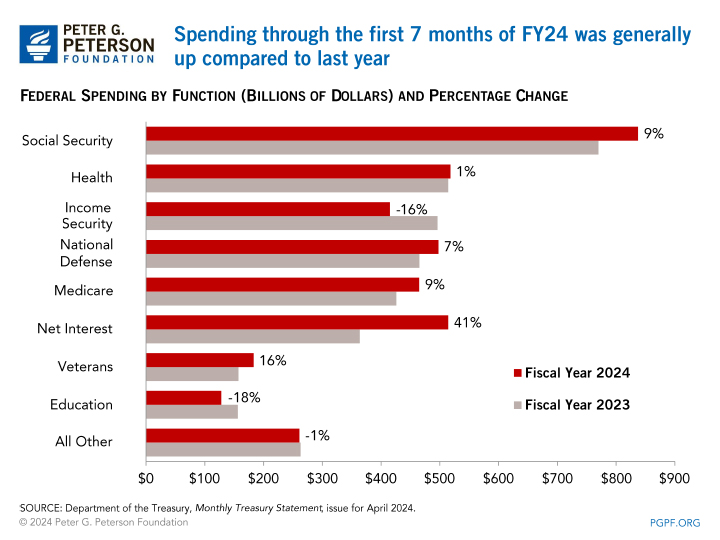
Total revenues increased by $278 billion in the first seven months of FY24 compared to the previous year. The main driver was a significant increase in collections of individual income ($161 billion more than the same period in FY23), corporate income ($61 billion), and payroll taxes ($61 billion). Collections of individual and corporate income taxes have been much higher in FY24 than through the same period in FY23 because the IRS allowed certain locations that suffered natural disasters to defer payments until this fiscal year.
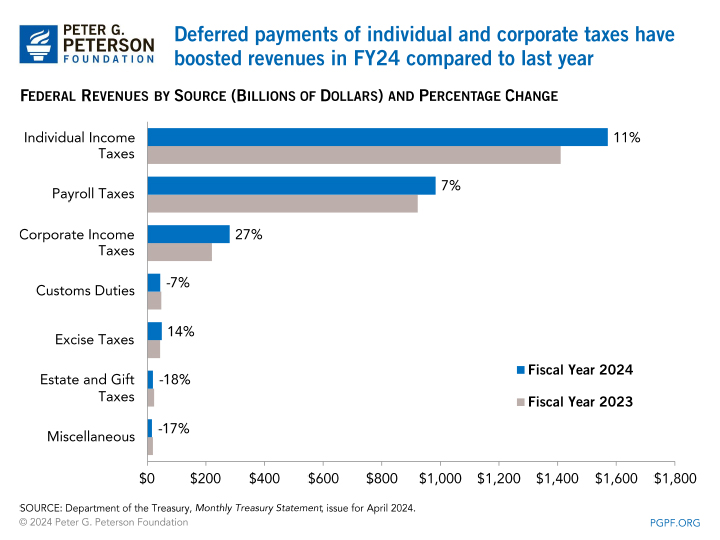
National Debt
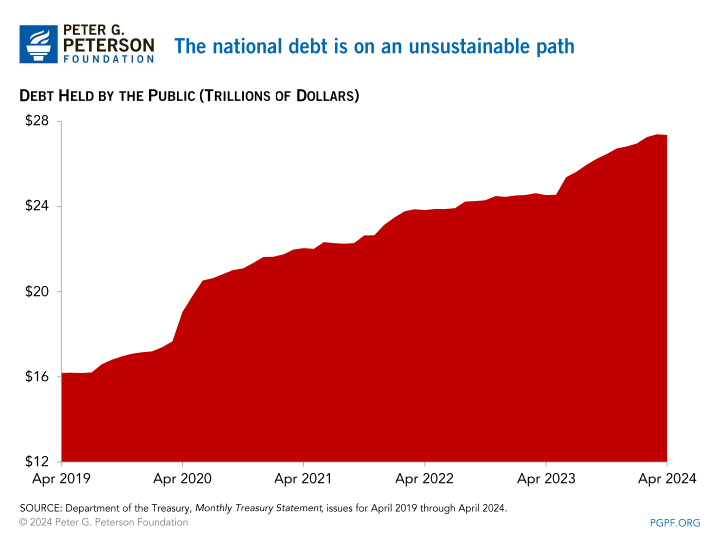
- Debt Held by the Public at the end of April 2024: $27.4 trillion
- Debt Held by the Public at the end of April 2023: $24.5 trillion
Despite a healthy economy, spending has been rapidly outpacing revenue collection. The unsustainable upward trajectory of deficits and debt argues for bipartisan solutions to improve the country’s fiscal outlook.
